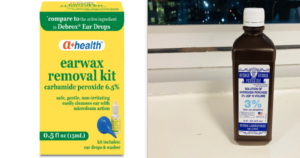Bleach a chemical composition of 3-6% sodium hypochlorite ( NaOCL), which is effective at killing bacteria, viruses, and other microorganisms. Hydrogen peroxide (H2O2) is a colorless chemical compound composed of hydrogen and oxygen. It is a clear liquid, slightly more viscous than water, and is commonly used as a disinfectant, antiseptic, and bleaching agent.
Bleach, typically sodium hypochlorite, is a strong oxidizing agent that works by releasing chlorine gas when dissolved in water. It’s effective against a wide range of bacteria, viruses, and fungi. It’s commonly used for disinfecting surfaces, whitening clothes, and sanitizing water in swimming pools. However, bleach can be corrosive, toxic if ingested, and can produce harmful fumes if mixed with other cleaning agents.
Hydrogen peroxide, on the other hand, is a milder disinfectant composed of hydrogen and oxygen. It works by releasing oxygen when applied to surfaces, which helps in killing bacteria, viruses, and mold. While non-flammable it possesses potent oxidizing properties that may lead to spontaneous ignition upon contact with organic substances.
Differences between Bleach vs Hydrogen Peroxide
| Bleach | Hydrogen Peroxide |
|---|---|
| Sodium hypochlorite | Hydrogen and oxygen |
| Strong oxidizing agent | Milder disinfectant |
| Effective against a wide range of bacteria, viruses, and fungi | Effective against bacteria, viruses, and mold |
| Disinfecting surfaces, whitening, sanitizing water in swimming pools | Wound cleaning, mouthwash, general household cleaner |
| Can be corrosive and toxic, produces harmful fumes if mixed with other agents | Breaks down into water and oxygen, more environmentally friendly |
| Corrosive and toxic if ingested, can produce harmful fumes | Milder and safer, less corrosive and toxic |
Bleach vs Hydrogen Peroxide Chemical Composition
While both bleach (sodium hypochlorite) and hydrogen peroxide are powerful oxidizing agents used for disinfection and bleaching, they differ in their chemical structures, reactivity, stability, and applications. Bleach is more caustic and stable but can be hazardous when mixed with certain chemicals, while hydrogen peroxide is milder, less stable, and generally safer to handle.
| Bleach (Sodium Hypochlorite) | Hydrogen Peroxide |
|---|---|
| NaClO | H2O2 |
| Sodium ions (Na+), Hypochlorite ions (ClO-) | Hydrogen (H), Oxygen (O) |
| Alkaline (higher pH) | Neutral |
| Stable | Less stable, decomposes over time |
| Can react violently with certain chemicals | Decomposes readily, releasing oxygen |
| Highly effective disinfectant, strong bleaching agent | Effective disinfectant, milder bleaching agent |
| Disinfection, bleaching, household cleaning | Disinfection, wound cleaning, bleaching sensitive materials |
9 Uses of Bleach
1. Household Cleaning and Disinfection:
- Surface Disinfection: Bleach is commonly used to disinfect and sanitize surfaces in kitchens and bathrooms, including countertops, sinks, and toilets.
- Laundry Whitening: It is a popular additive in laundry detergents for whitening clothes and removing tough stains.
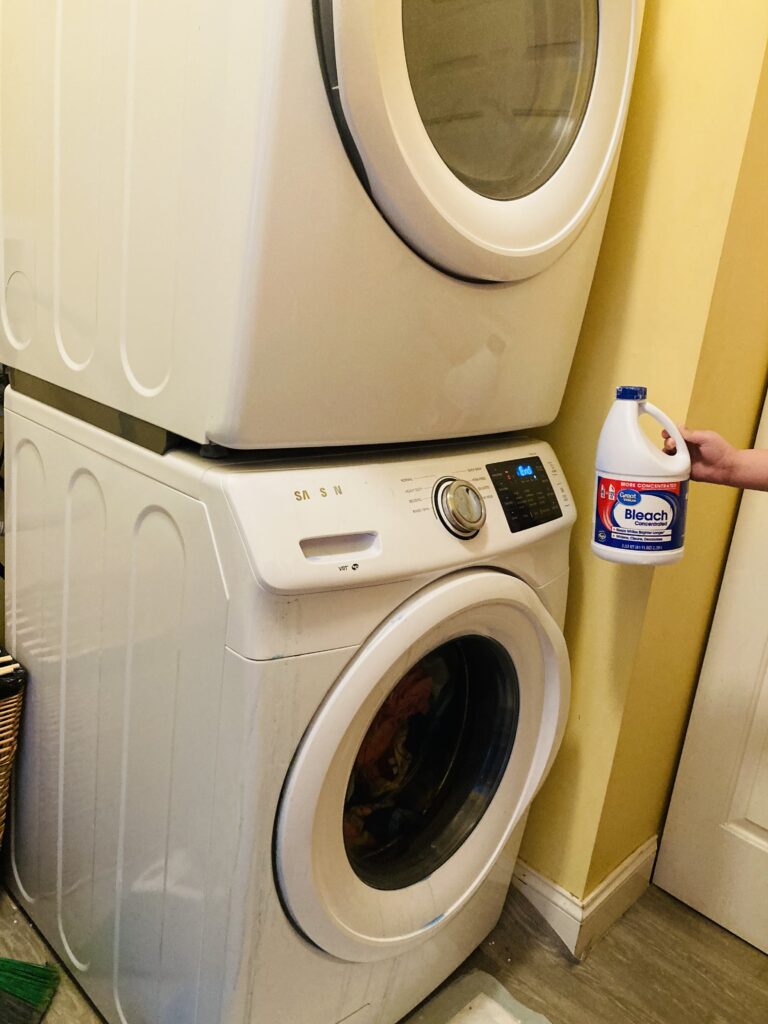
- Mold and Mildew Removal: Bleach effectively kills mold and mildew on surfaces, such as shower curtains, tile grout, and bathroom fixtures.
- Drain and Toilet Cleaning: It can be used to clean and deodorize drains and toilets, helping to prevent clogs and eliminate unpleasant odors.
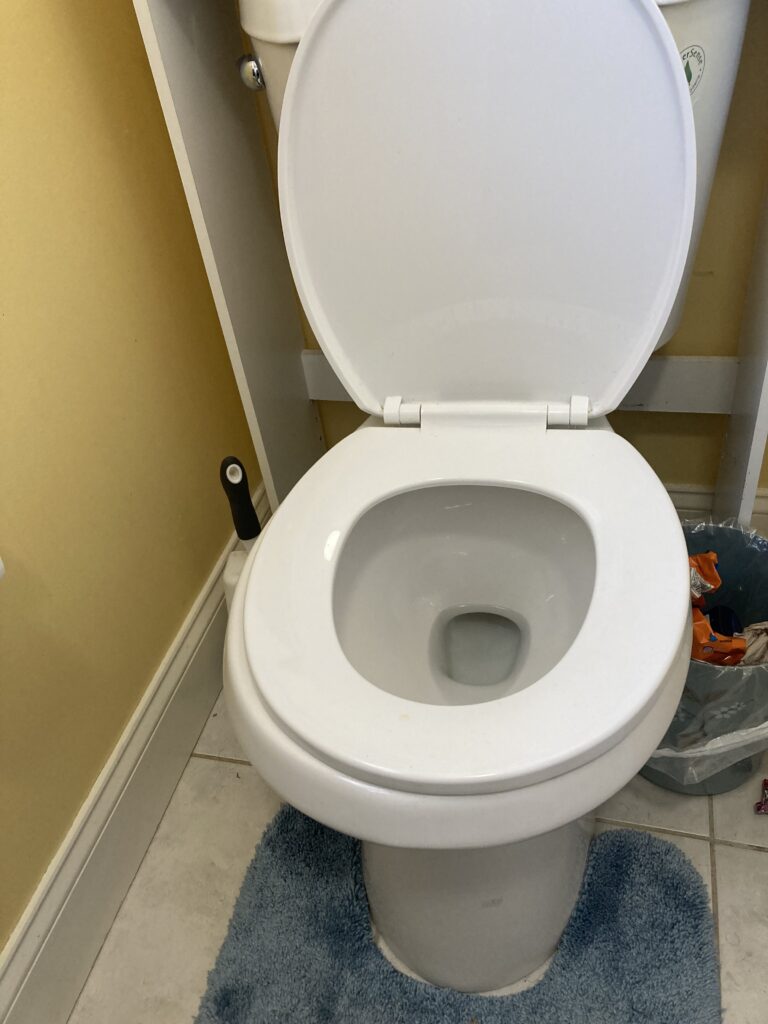
2. Water Treatment:
- Disinfection: Bleach is used in water treatment processes to disinfect drinking water and swimming pools, killing bacteria, viruses, and other pathogens to ensure safe water consumption and recreational use.
3. Healthcare:
- Surface Disinfection: In healthcare facilities, bleach solutions are used to disinfect surfaces, equipment, and patient care areas to prevent the spread of infections.
- Instrument Sterilization: Certain medical instruments can be sterilized using bleach solutions to ensure they are free from pathogens before use.
4. Food Industry:
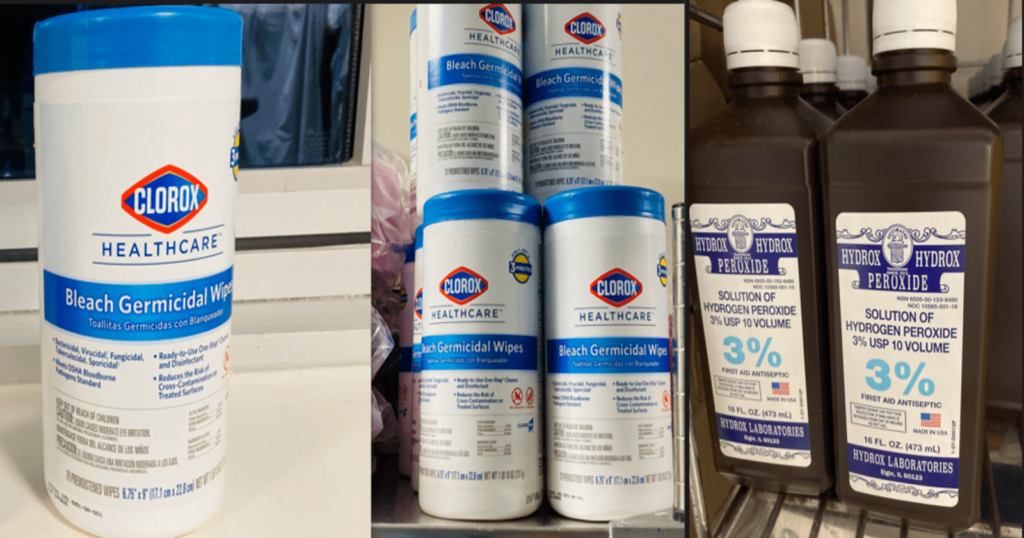
- Sanitization: Bleach is utilized to sanitize food preparation surfaces, equipment, and utensils in restaurants, food processing plants, and commercial kitchens to prevent cross-contamination and foodborne illnesses.
5. Emergency Response:
- Water Purification: During emergencies such as natural disasters, bleach can be used to purify drinking water by killing harmful microorganisms, making it safe for consumption.
6. Industrial Cleaning:
- Disinfection: Bleach is used in industrial settings for cleaning and disinfecting surfaces, equipment, and machinery to maintain hygiene and prevent contamination.
7. Pool Maintenance:
- Pool Sanitization: Bleach, or chlorine bleach, is commonly used to sanitize swimming pools and hot tubs by killing bacteria and algae to maintain water quality and clarity.

8. Mold Remediation:
- Surface Treatment: Bleach solutions are employed in mold remediation efforts to kill mold spores on surfaces and inhibit further growth.
9. Whitening and Stain Removal:
- Household Cleaning: Apart from laundry, bleach can be used to whiten and remove stains from various household items like plastic containers, ceramic tiles, and grout.

7 Common uses of Hydrogen peroxide
- Disinfectant: Hydrogen peroxide is commonly used as an antiseptic for minor cuts and abrasions. It helps clean wounds and prevent infection by killing bacteria.
- Whitening agent: It’s used as a bleaching agent for hair, teeth, and certain fabrics. In teeth whitening products, it helps break down stains and brighten the enamel.
- Cleaning agent: Hydrogen peroxide is an effective household cleaner for surfaces like countertops, floors, and bathrooms. It can help remove stains and disinfect surfaces.
- Water treatment: In certain industries, hydrogen peroxide is used to treat water by oxidizing organic and inorganic impurities. It can also be used to sterilize water in medical settings.
- Hair care: It’s used in hair dyes and bleaching products to lighten hair color. It works by breaking down the melanin in the hair shaft.
- Rocket propulsion: In the aerospace industry, hydrogen peroxide is used as a propellant in rocket engines. When it decomposes, it releases oxygen gas, which helps propel the rocket.
- Food processing: Hydrogen peroxide is used in food processing to sterilize equipment and surfaces, ensuring food safety and preventing contamination.
Role of bleach in the health care environment
1. Disinfection: Bleach is a powerful disinfectant that effectively kills a broad spectrum of bacteria, viruses, fungi, and other pathogens. In healthcare settings, where controlling infections is crucial, bleach is used to disinfect surfaces, equipment, and instruments to prevent the transmission of harmful microorganisms.

2. Surface Cleaning: Healthcare facilities often require rigorous cleaning to maintain hygienic conditions. Bleach is used to clean various surfaces such as floors, walls, countertops, and medical equipment to remove dirt, grime, and infectious agents.
3. Decontamination: In situations where there is potential contamination with blood or other bodily fluids, bleach is used to decontaminate surfaces and materials to minimize the risk of infection transmission.
4. Sterilization: While bleach is not typically used for sterilization of medical instruments and equipment, it can be used as a part of the sterilization process in certain situations, such as in the disinfection of water used for medical purposes.
5. Prevention of Healthcare-associated Infections (HAIs): Healthcare-associated infections are a significant concern in healthcare settings. Bleach helps in reducing the risk of HAIs by effectively killing pathogens on surfaces and minimizing their spread.
6. Control of Environmental Pathogens: Healthcare environments can harbor various environmental pathogens that pose risks to patients, healthcare workers, and visitors. Bleach is used to control these pathogens and maintain a safe environment for all individuals in the healthcare facility.
7. Emergency Response: In emergency situations such as outbreaks of infectious diseases or biological incidents, bleach can be used for rapid and effective disinfection of surfaces and materials to contain the spread of pathogens.
Risk associated with bleach
- Skin and eye irritation: Bleach is a strong chemical that can cause irritation, burns, or even permanent damage to the skin and eyes if it comes into direct contact with them.
- Respiratory issues: Inhaling bleach fumes can irritate the respiratory system, leading to coughing, wheezing, or difficulty breathing. In severe cases, it can cause chemical pneumonitis, a condition characterized by inflammation of the lungs.
- Mixing with other substances: Bleach should never be mixed with other cleaning products, especially those containing ammonia or acids, as it can produce toxic gases such as chlorine gas, which is extremely hazardous to health.
- Environmental impact: Improper disposal of bleach can harm the environment, particularly aquatic ecosystems. Chlorine bleach, for example, can react with organic matter in water to produce harmful byproducts.
To minimize these risks, it’s essential to follow safety precautions when using bleach, such as wearing protective clothing and gloves, ensuring adequate ventilation, and never mixing it with other chemicals. It’s also crucial to read and follow the instructions on the product label carefully.
Role of Hydrogen peroxide in wound Care
Hydrogen peroxide is commonly used on wounds as an antiseptic to help prevent infection and promote healing. Here’s how it’s typically used:
1. Cleaning the wound: Before applying hydrogen peroxide, it’s important to clean the wound with mild soap and water to remove any dirt or debris. Gently pat the area dry with a clean towel.
2. Application of hydrogen peroxide: Using a clean cotton ball or gauze pad, apply a small amount of hydrogen peroxide to the wound. It will bubble upon contact with the wound, which helps to clean out any bacteria or debris.

3. Rinsing: After the bubbling subsides (usually after a minute or two), rinse the wound with clean water to remove any remaining hydrogen peroxide and debris.
4. Dressing the wound: Once the wound is clean, apply an appropriate dressing such as a sterile bandage or gauze pad to protect it from further contamination.
5. Repeat as needed: Depending on the severity of the wound, you may need to repeat the hydrogen peroxide application and cleaning process daily until the wound heals.
It’s important to note that while hydrogen peroxide can be effective in cleaning wounds, it can also damage healthy tissue and slow down the healing process.
If used excessively or for an extended period. It’s generally recommended to use hydrogen peroxide for acute wounds and under the guidance of a healthcare professional. Chronic wounds or deep cuts may require different treatment approaches.
Potential risks associated with hydrogen Peroxide
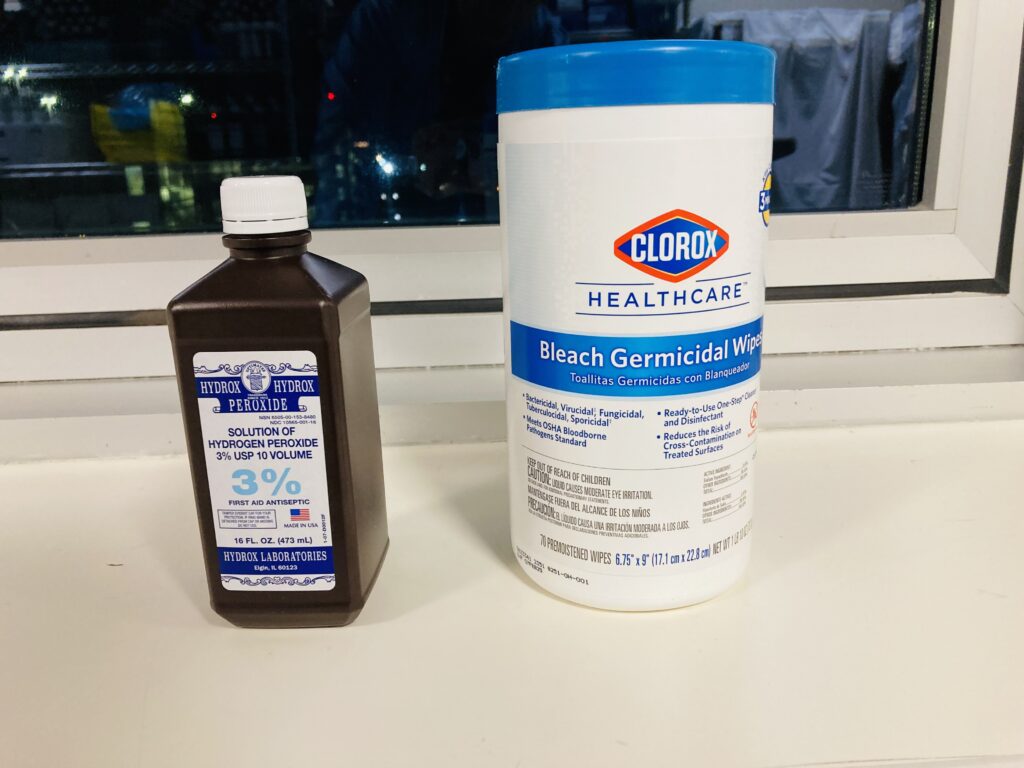
1. Toxicity if ingested: Ingestion of hydrogen peroxide can lead to toxicity, causing harm to the digestive system and potentially other organs.
2. Toxicity if inhaled: Inhaling hydrogen peroxide, especially in household strength (3%), can cause respiratory irritation, leading to coughing, wheezing, and difficulty breathing.
3. Skin irritation: Direct contact with hydrogen peroxide can irritate the skin, leading to redness, itching, and possibly chemical burns.
4. Eye irritation: Contact with hydrogen peroxide can cause irritation to the eyes, resulting in redness, pain, and potential damage to the cornea if not promptly rinsed out.
5. Corrosive properties: Concentrated hydrogen peroxide solutions can be corrosive to surfaces and materials, potentially causing damage upon contact.
6. Reactivity with organic materials: Hydrogen peroxide is an oxidizing agent and can react vigorously with organic materials, potentially leading to combustion or other hazardous reactions.
7. Chemical burns: Prolonged or significant exposure to hydrogen peroxide can cause chemical burns on the skin, eyes, or mucous membranes.
8. Potential for allergic reactions: Some individuals may experience allergic reactions to hydrogen peroxide, leading to symptoms such as hives, swelling, or difficulty breathing.
9. Eye exposure to 3% hydrogen peroxide may result in pain and irritation, but severe injury is rare. More concentrated solution may result in ulceration or perforation of the cornea.
How Does Bleach reacts to Mold and Mildew
Bleach, specifically sodium hypochlorite, is effective against mold due to its ability to disrupt the mold’s cellular structure and inhibit its growth. When bleach comes into contact with mold, it oxidizes the mold’s proteins and enzymes, essentially breaking them down and killing the mold. This reaction helps to disinfect surfaces and remove mold stains.
However, it’s important to note that bleach is only effective on non-porous surfaces and may not completely eliminate mold growth on porous materials like wood or drywall. Additionally, using bleach can produce harmful fumes and should be used with caution in well-ventilated areas.
Bleach is effective against mildew, which is a type of mold, for similar reasons as it is against other types of mold. Mildew, like other molds, consists of organic matter that bleach can break down and destroy. When bleach comes into contact with mildew, it oxidizes the proteins and enzymes within the mildew cells, effectively killing it and preventing further growth.
However, as with mold, bleach may not be effective on all surfaces and materials, particularly porous ones where mildew can penetrate deeply.
How long does it take bleach to disinfect?
Diluted household bleach disinfects within 10–60 minutes contact time.
The time it takes for bleach to disinfect depends on several factors, including the concentration of the bleach solution, the type of microorganisms present, and the surface being treated. Typically, bleach solutions need some contact time to effectively kill bacteria, viruses, and other pathogens.
In general, a typical bleach solution of around 1:10 dilution (1 part bleach to 9 parts water) is effective for disinfection purposes. According to the Centers for Disease Control and Prevention (CDC), bleach solutions with at least 1000 ppm (parts per million) sodium hypochlorite are suitable for disinfecting surfaces against many pathogens.
For disinfection, surfaces should remain wet with the bleach solution for a certain contact time to ensure effectiveness. This contact time can vary depending on the concentration of the bleach solution and the specific pathogen being targeted. It’s often recommended to let the bleach solution remain on surfaces for at least 1 minute to ensure proper disinfection. However, for some pathogens or situations, longer contact times may be necessary.
It’s essential to follow the manufacturer’s instructions for diluting bleach properly and to ensure adequate ventilation when using bleach as it can produce harmful fumes. Additionally, it’s crucial to avoid mixing bleach with other cleaning products, especially those containing ammonia, as this can produce toxic gases.
Overall, while bleach is a powerful disinfectant, proper usage and adherence to instructions are vital to ensure effective disinfection and safety.
How Does Hydrogen Peroxide work on mold and mildew
Hydrogen peroxide works on mold and mildew through its oxidizing properties. Mold and mildew are types of fungi that thrive in damp and humid environments. When hydrogen peroxide comes into contact with mold and mildew, it reacts by releasing oxygen, which creates an unfavorable environment for the fungi to survive.
Here’s how it typically works:
- Penetration: Hydrogen peroxide is a liquid, so it can penetrate porous surfaces where mold and mildew may be growing. This allows it to reach the roots of the fungi where they are anchored.
- Oxidation: Hydrogen peroxide breaks down into water and oxygen upon contact with organic matter, including mold and mildew. The release of oxygen creates a hostile environment for the fungi by disrupting their cellular structure and metabolic processes.
- Killing and Removing: As the oxygen is released, it destroys the mold and mildew cells, effectively killing them. Additionally, the foaming action of hydrogen peroxide helps to lift the mold and mildew from the surface, making it easier to remove them physically.
- Prevention: Hydrogen peroxide also has mild antifungal properties, which can help to prevent future mold and mildew growth when applied to surfaces prone to colonization.
It’s important to note that while hydrogen peroxide can be effective against mold and mildew, it may not be suitable for all surfaces.
Safety Precautions and Instructions when using Bleach and hydrogen Peroxide
When handling Bleach
| Safety Precautions | Instructions |
|---|---|
| Wear protective clothing, gloves, and eyewear | Dilute bleach according to instructions provided on the label |
| Work in a well-ventilated area | Never mix bleach with other cleaning products, especially ammonia or acids, as it can produce toxic fumes |
| Keep bleach away from children and pets | Use bleach in a well-lit area to avoid accidental spills or splashes |
| Avoid prolonged skin contact | Rinse surfaces thoroughly with water after using bleach |
| Do not ingest bleach | Store bleach in a cool, dry place away from direct sunlight |
When handling Hydrogen Peroxide
- Wear protective gear: Use gloves, safety goggles, and possibly a lab coat or apron to protect your skin and eyes from contact with hydrogen peroxide.
- Work in a well-ventilated area: Hydrogen peroxide can release oxygen gas, which can build up in enclosed spaces. Ensure there is adequate ventilation to prevent the accumulation of gas.
- Use the appropriate concentration: Hydrogen peroxide is available in different concentrations, typically ranging from 3% (household) to 30% (industrial). Be sure to use the concentration appropriate for your intended purpose and dilute it if necessary.
- Avoid mixing with incompatible substances: Hydrogen peroxide can react violently with certain chemicals, such as organic materials, acids, and reducing agents. Always check compatibility before mixing.
- Store properly: Keep hydrogen peroxide containers tightly sealed and stored in a cool, dry place away from direct sunlight and incompatible materials.
- Handle with care: Be cautious when pouring or transferring hydrogen peroxide to avoid spills or splashes. Clean up any spills immediately and dispose of waste properly according to local regulations.
- Know what to do in case of exposure: If hydrogen peroxide comes into contact with your skin, eyes, or if you inhale its vapors, rinse thoroughly with water and seek medical attention if necessary.
- Keep out of reach of children: Store hydrogen peroxide safely away from children and pets, as ingestion or contact with concentrated hydrogen peroxide can cause serious harm.
Do you Know there are 2 types of Bleach
Chlorine bleach and oxygen bleach are two common types of household bleaches, each with its own composition, uses, and differences:
- Chlorine Bleach:
Composition: Chlorine bleach, also known as sodium hypochlorite, is a strong chemical compound containing sodium, chlorine, and oxygen.
Uses:
Chlorine bleach is effective for whitening fabrics and removing stains, especially on white clothing. It’s commonly used in laundry to remove tough stains like grass, wine, and coffee. It’s also used as a disinfectant to kill bacteria, viruses, and fungi on surfaces, making it popular for cleaning and sanitizing bathrooms and kitchens.
Chlorine bleach is harsher and can damage certain fabrics and surfaces if not used properly. It can weaken fibers over time and may cause color loss or yellowing on colored fabrics. Additionally, it has a strong odor and can release harmful fumes, so it should be used in a well-ventilated area and with caution.
2. Oxygen Bleach:
Oxygen bleach, also known as sodium percarbonate or sodium perborate, is made from sodium carbonate (washing soda) and hydrogen peroxide.
Uses:
Oxygen bleach is gentler and safer than chlorine bleach, making it suitable for use on colored fabrics and delicate materials like wool and silk. It’s effective for removing stains and brightening whites without causing damage or discoloration. Oxygen bleach is also environmentally friendly, as it breaks down into water, oxygen, and soda ash, leaving no harmful residues.
- Oxygen bleach is less aggressive than chlorine bleach, making it a better choice for sensitive materials and colors. It’s often recommended for use on organic stains like food spills, body oils, and pet stains. However, it may not be as effective as chlorine bleach for killing bacteria and disinfecting surfaces.
While both chlorine bleach and oxygen bleach are effective for stain removal and whitening, chlorine bleach is stronger and more suitable for tough stains and disinfection but requires careful handling due to its harshness and fumes. Oxygen bleach is milder, safer for colored fabrics, and environmentally friendly but may not be as effective for disinfection.
How Hydrogen peroxide can be use to maintain your Pool
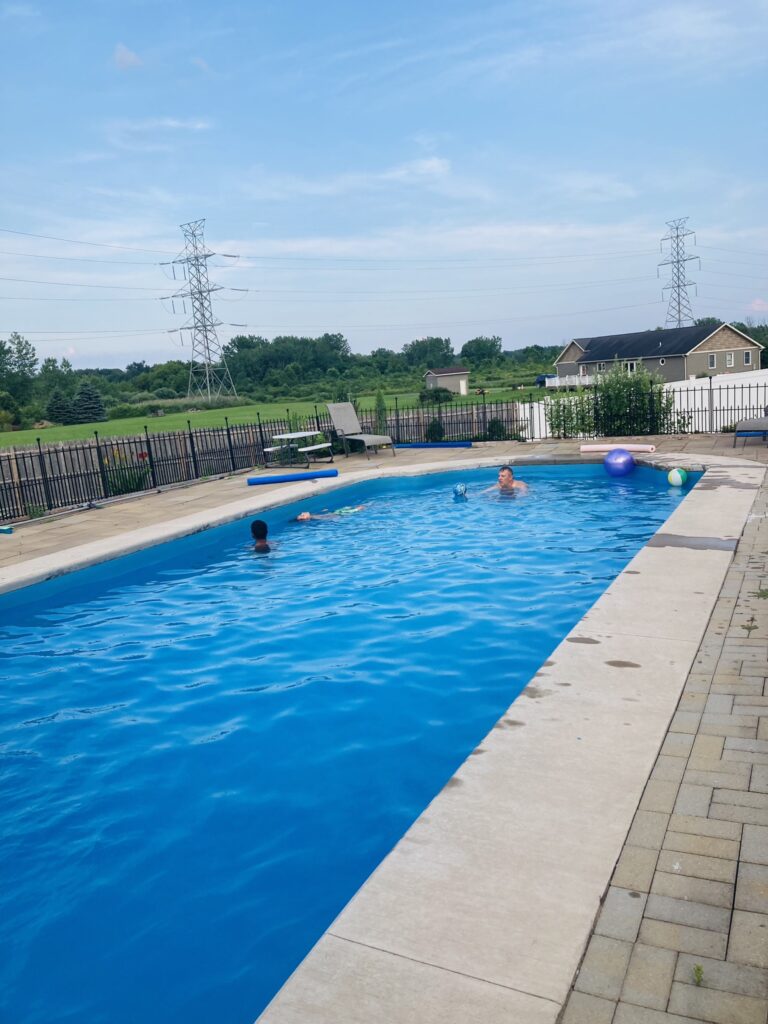
- Sanitization: Hydrogen peroxide can act as an oxidizing agent, similar to chlorine, and can help kill bacteria and algae in the pool water. However, it’s not as potent or long-lasting as chlorine, so you may need to use it in conjunction with other sanitizers or more frequently.
- Algae Control: Hydrogen peroxide can be particularly effective for controlling algae growth in pools. It can help break down algae cells and prevent them from spreading. However, again, regular monitoring and possibly combining it with other algaecides might be necessary for optimal results.
- pH Levels: Hydrogen peroxide can affect the pH levels of your pool water. It tends to increase the pH, so you’ll need to monitor and adjust the pH levels accordingly to maintain proper balance.
- Safety: When using hydrogen peroxide in your pool, be cautious about the concentration you’re using and follow safety guidelines. Hydrogen peroxide can be corrosive at higher concentrations and can irritate the skin and eyes. Always handle it with care and follow manufacturer instructions.
- Compatibility: Hydrogen peroxide may not be compatible with all pool materials and equipment, so it’s essential to check compatibility before use. Some materials may degrade or become damaged when exposed to hydrogen peroxide over time.
- Environmental Impact: Hydrogen peroxide can be a more environmentally friendly option compared to chlorine, as it breaks down into water and oxygen and doesn’t leave behind harmful residues. However, its production and disposal still have environmental considerations.
Resources
https://www.atsdr.cdc.gov/toxfaqs/tfacts174.pdf

